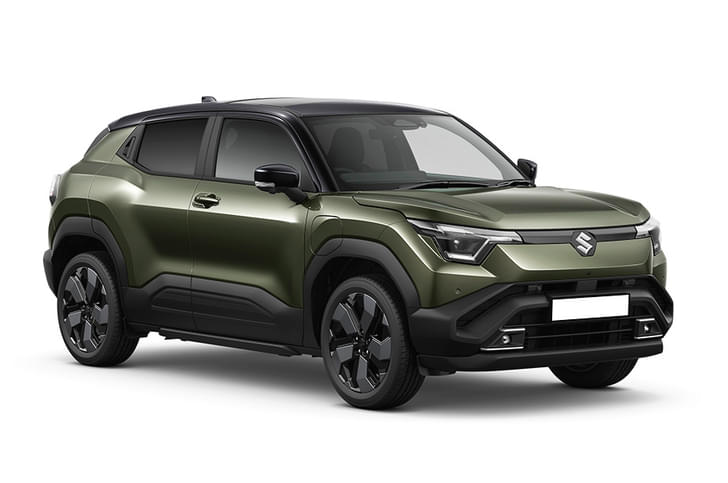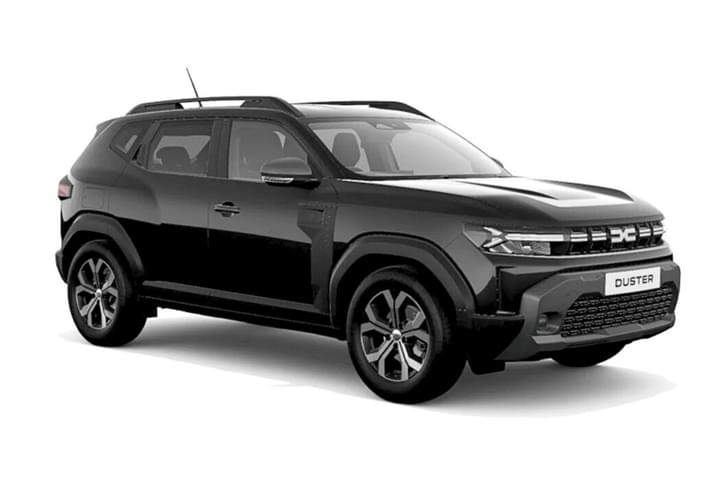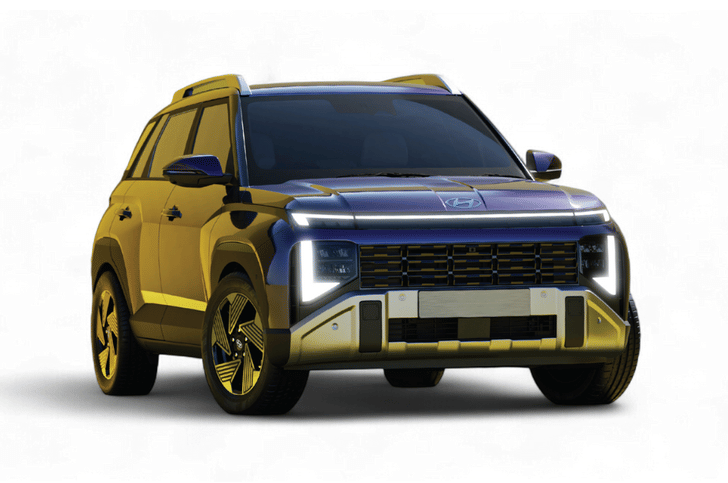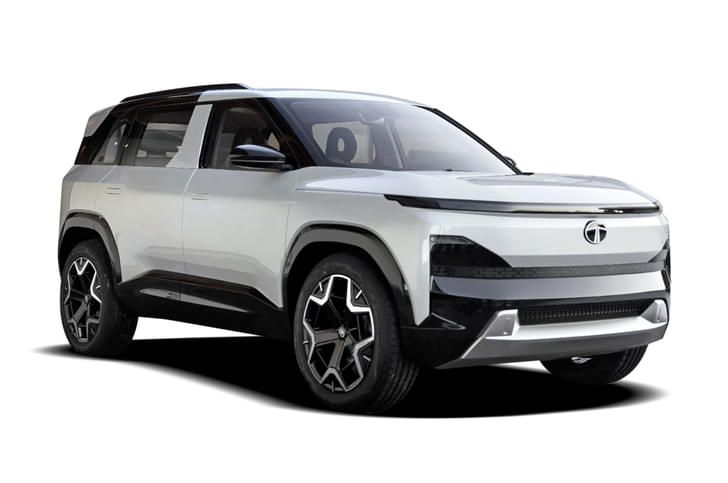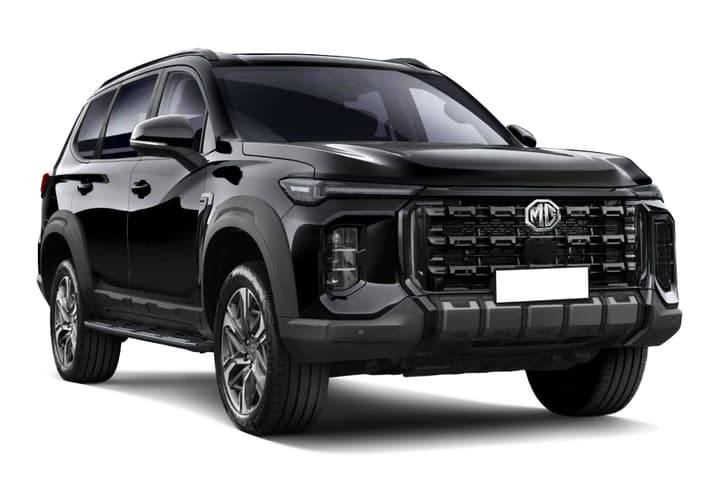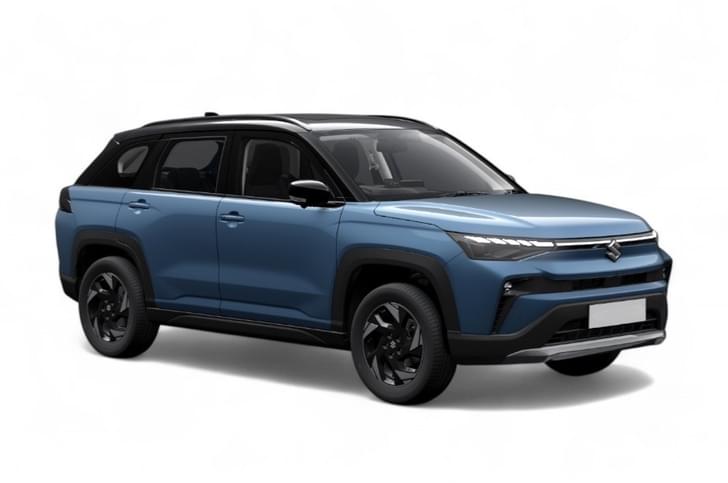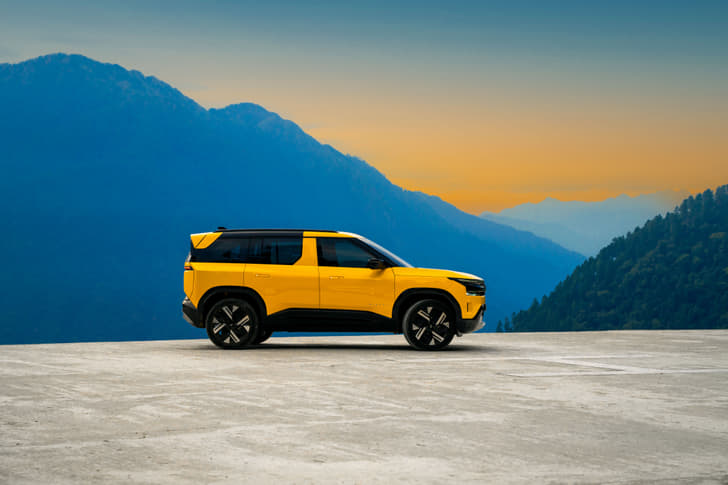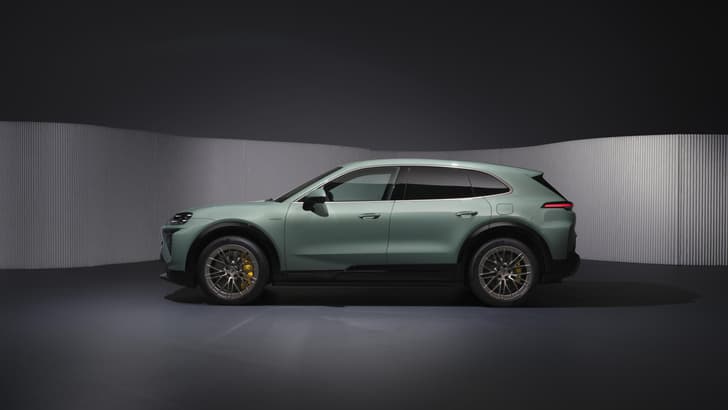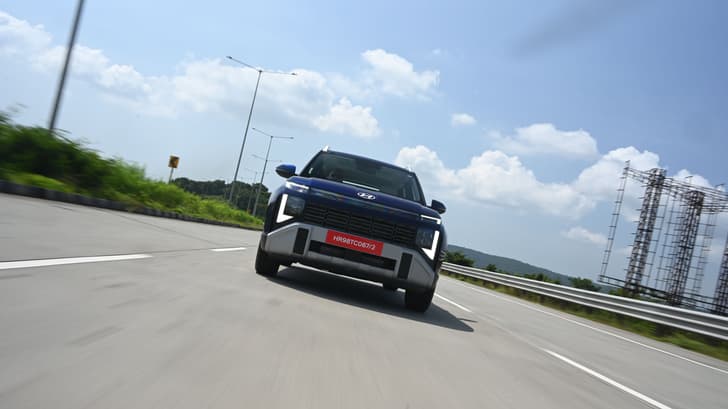You have to credit the second-gen Mahindra Thar for the new-found mainstream interest in off-roaders. Its tough yet friendly persona has proved to be a hit, and the fact that over 75,000 people have put their money down for one should tell you of its segment transcending appeal. This wave of interest is sure to play in to the hands of the new Force Gurkha that’s also taken a few giant leaps of its own.
The new Gurkha is, for the moment at least, only available in hard top format with a diesel engine and manual gearbox. For a like-to-like comparison, we’ve selected the Thar in similar hard top diesel-manual guise from the matrix of variants that include petrols, automatics, and even convertible roof versions. Let the games begin.
What are they like in look?
There’s a cool quotient to off-roaders and, the fact is, to many buyers a large part of these models’ appeal stems from the way they look and the image they portray. So, I do take a good look at the duo before they are to get all dirty.
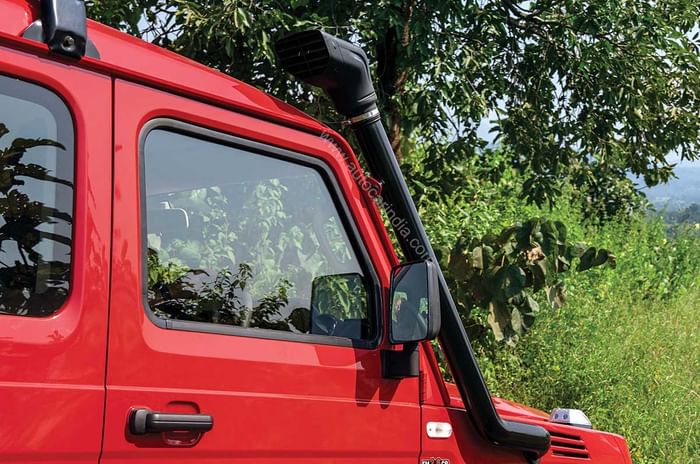
The new Gurkha is all block-like and angular, and looks like a G-Class for the masses. The full LED headlights, long single-piece rear windows and consistent shutlines (something the old Gurkha wasn’t known for) are some details of note. The Gurkha is the longer model here, but more than anything, it’s the significantly higher roof that makes it seem like the larger vehicle. The optional roof rack only adds to the effect, though at the same time, the 16-inch rims (the alloys are a Rs 38,000 option) look a size or two too small.
The Thar has the lower roofline, but it’s wider in its body as well as front and rear tracks, has the longer wheelbase and, in LX trim as featured here, also rides on larger 18-inch rims – all of which come together to give the Mahindra a squat stance. The Thar that’s undeniably Wrangler-like in look is chunky and tough, and, like the Gurkha, has a ‘don’t mess with me’ vibe about it. Whichever be your pick, your vehicle is sure to stand out in the sea of SUVs on our roads.
What are they like off-road?
The latest Gurkha and Thar might have evolved greatly from their unidimensional predecessors, but at their core these are still off-roaders first. Both models use tough ladder frame construction and solid axles at the back, though their comfort-oriented arrangement of independent front suspensions and coil springs at all four corners do bring certain implications in the rough. In terms of off-road specs, it’s the Thar that has the upper hand with greater ground clearance (226mm vs 205mm) as well as better approach (41.8deg vs 37deg), departure (36.8deg vs 33deg) and breakover angles (27deg vs 25deg). The Thar is handily 400kg lighter too and also has a 40hp power and 50Nm torque advantage though 4WD-Low is the great equaliser in low speed settings. The Gurkha that gets a standard fit snorkel does have the edge in water wading ability with 700mm to the Thar’s 650mm. Our test cars are shod with all-terrain tyres and both models also offer variations of the locking differential which I’ll get to in a bit.
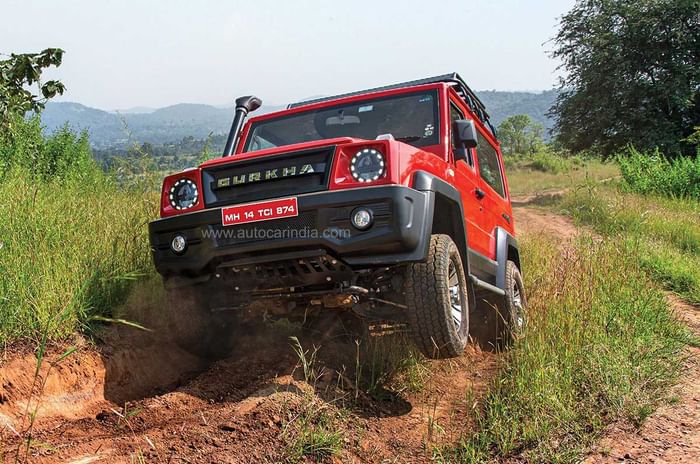
You’d need a whole range of conditions to declare the ultimate off-roader of the two, but over a dry and hot day at some of the obstacles at the Learn Offroad academy near Pali outside Mumbai, there were more than a few takeaways.

The Gurkha seats you higher, its larger glasshouse gives a more commanding view out and that squared out bonnet only makes it easier to judge the vehicle’s extremities. Trouble is, on obstacles like side inclines the tall Gurkha also feels more top heavy, and that’s not a comfortable feeling when you have to tiptoe along at a 25 degree (or more) roll angle. The low range gearbox set to 4-Low sees us through much of the course, but for when the going gets really tough, there’s the Gurkha’s rear and front mechanical locking differentials. Because these are manually operated (via strong pulls at levers near the gear) and not automated like the Thar’s rear one, you can set up the Gurkha for action before you tackle an obstacle, and this can make all the difference on, say, a rock crawl. With the rear diff locked, the Gurkha finds grip when there’s seemingly little of it and helps the Force chug up a steep muddy incline with surprising ease. The front locking differential? It’d be your get out of jail card in the most extreme situations. Front wheel articulation, however, isn’t exceptional and since the tyres get air time, there’s quite a bit of side-to-side movement over the rutted path on the course. Of the other things, the Gurkha’s metal rear footstep that juts out also makes hard contact exiting a really deep dip. To be fair, the Thar’s plastic rear bumper does so too.
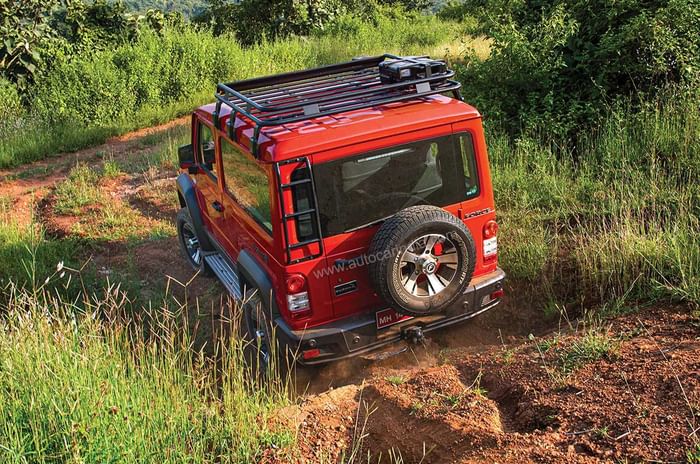
In the same scenarios, the Thar feels different. It doesn’t give the same captain’s view of the world, but the lower centre of gravity and wider track equate to a more sure-footed feel, particularly on the side incline. There’s slightly less side-to-side rocking on the rutted track too, but again, front wheel articulation isn’t great. Like the Gurkha, the Thar comfortably inches its way down a steep descent and makes a sharp ascent feel flatter than it is. 4-Low helps keep the Thar out of trouble with the rear mechanical locking differential coming into play on the looser surfaces and trickier bits. Unlike the Gurkha’s manually operated unit, the Thar’s system automatically locks the rear wheels when it detects a wheel speed difference of 100rpm. Thing is, the mechanism slams into action quite harshly and this can upset the balance in a really precarious situation. There’s brake locking differential at the front too, which brakes a spinning wheel so that all torque goes to the wheel with traction. Over the course, I do note more finesse in the Thar’s mechanicals, and that’s a theme that continues on to the road as well.

| Technical specifications | ||
|---|---|---|
| Force Gurkha 2.6D 4x4 | Mahindra Thar 2.2D MT LX | |
| Length | 4116mm | 3985mm |
| Width | 1812mm | 1855mm |
| Height | 2075mm | 1844mm |
| Wheelbase | 2400mm | 2450mm |
| Approach Angle | 37 deg | 41.8 deg |
| Departure Angle | 33 deg | 36.8 deg |
| Breakover Angle | 25 deg | 27 deg |
| Tyres | 245/70 R16 | 255/65 R18 |
| Weight | 2175kg | 1783kg |
| Ground Clearance | 205mm | 226mm |
| Wading Ability | 700mm | 650mm |
| Front Suspension | Independent, double wishbone, coil springs, anti-roll bar | Independent, double wishbone, coil springs |
| Rear Suspension | Non-independent, solid axle, multi-link, coil springs, anti-roll bar | Non-independent, solid axle, multi-link, coil springs, anti-roll bar |
What are they like inside?
Switching back and forth between the driver’s seats of the two over the bout of off-roading has brought to light other differences as well. It’s more of a climb up into the Gurkha’s cabin and you’ll need to use the handle on the A-pillar to haul yourself in. Once in place, you’ll take readily to the large seats, the accommodating driving position (the footwell is spacious) and the panoramic view around. That said, the dashboard is too simplistic, and the impression is not helped by the hard plastics used all around. The simple dials and manually-adjusted mirrors don’t look or feel 2021 enough either, and while useful, the touchscreen and tyre pressure monitor (it’s beside the instruments binnacle) also appear to be aftermarket add-ons. Of the other things, the wide centre console offers space for small items and there’s a usable glovebox too, but there are no door pockets.
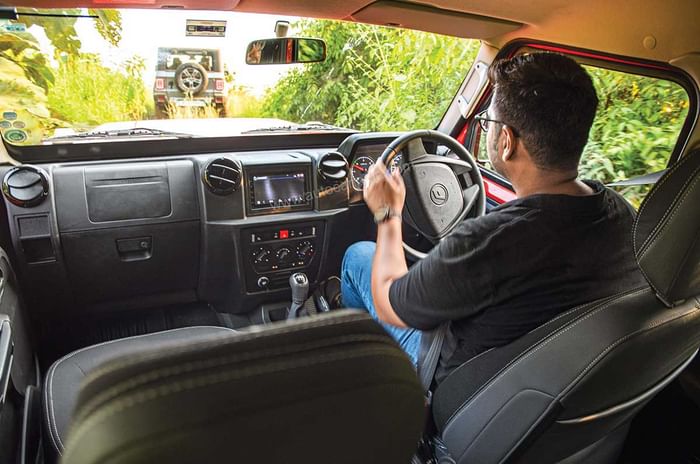
Getting in to a Thar is easier (you’ll still need to use a footboard), but after a Gurkha, the Mahindra’s cabin does feel more compact. You sit closer to your co-passenger, the glasshouse is smaller and the black roof doesn’t help the impression of space. The Thar has smaller seats too and drivers who like to spread out and sit will find the narrow footwell an irritant. On the plus side, the Thar’s dashboard not only looks more interesting but also uses higher quality materials. And while a brochure-to-brochure comparison will reveal that the Thar offers only a few more features than the Gurkha, the execution is a lot better on the Mahindra. For instance, the Thar is the only one with steering mounted controls and, in general, the quality of switches is superior too. Also nicer is the Thar’s touchscreen that packs in off-road data too. The Thar also has the smarter dials and more informative MID display with nice graphics for the four-wheel drive functions. In terms of practicality, the Thar gets you door pockets and cupholders between the seats, but the glovebox is tiny.
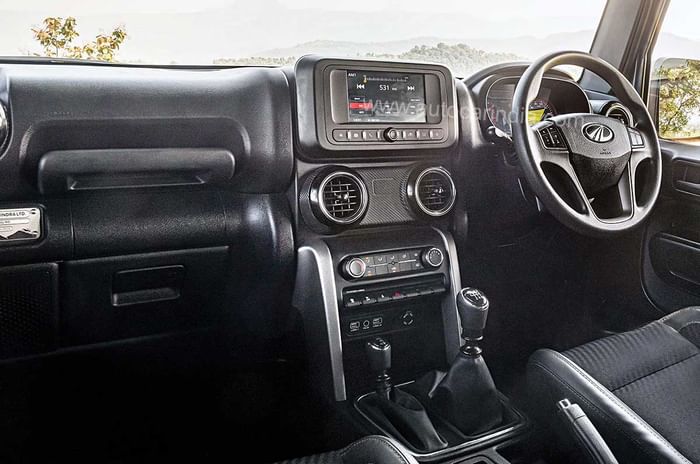
How do they compare on rear seat comfort?

Shifting focus to the back seats, getting into and out of the Thar’s second row is tricky business. You have to enter from the front passenger side, and even with the seat slid all the way forward, the opening isn’t large enough for full-sized adults to get through with ease. You’ll also sit shoulder to shoulder with your fellow passenger, the seating position is knees up and foot room is limited. In a Gurkha, you enter from the tail gate. It’s a big step up, but the passage between the rear seats makes the journey in far easier. And because the seats are positioned over the wheel wells rather than alongside them as on the Thar, the Gurkha offers a whole lot more room. The large captain’s chairs with their adjustable armrests are really comfy and you’ll love the safari car-like view afforded out of the large rear windows.

What about luggage space?
The Gurkha also offers more room for luggage, but you’ll have to position your bags cleverly to leave enough room for the rear passengers to get out. The Gurkha’s front passenger seat doesn’t slide all the way forward as on the Thar. On the Thar, the side hinged tail gate and top hinged windscreen open to reveal a smaller luggage area. The Thar’s rear seat backrests do split and fold to free up more room.
| Features | ||
|---|---|---|
| Force Gurkha 2.6D 4x4 | Mahindra Thar 2.2D MT LX | |
| Airbags | 2 | 2 |
| ABS | Available | Available |
| ESC | NA | Available |
| LED headlights | Available | NA |
| Front power windows | Available | Available |
| Driver seat height adjust | NA | Available |
| Steering adjust | Tilt & telescopic | Tilt |
| Steering audio controls | NA | Available |
| Mirror adjust | Manual | Powered |
| Cruise control | NA | Available |
| Touchscreen | 7-inch | 7-inch |
| Android Auto/Apple CarPlay | Available | Available |
| Tyre pressure monitor | Available | Available |
| Hill descent control | NA | Available |
What are they like to like to drive on the road?
The Gurkha’s 2.6-litre turbo-diesel engine has the displacement advantage, but its 91hp and 250Nm aren’t anything to write home about. The 2.1 tonne mass also weighs down on the engine. Performance in town is adequate, but on the open road the Gurkha simply feels lethargic. The build of speed is slow and the tiny powerband offers little to excite; the Gurkha is done with its best by 3,000rpm. The 2.6-litre engine is shared with Force’s commercial vehicles and that partly explains why it delivers power the way it does and isn’t free-revving. Gearing is also very short with fourth gear maxing out at a true 103kph and a top speed of 123kph in fifth. The Force cruises comfortably at 80kph, but 100kph feels like a stretch and beyond that you have to really work the engine. This is not the right choice of vehicle for quick cross-country drives. The gearbox also has long throws, isn’t precise and you’ll often be second guessing gearshifts.
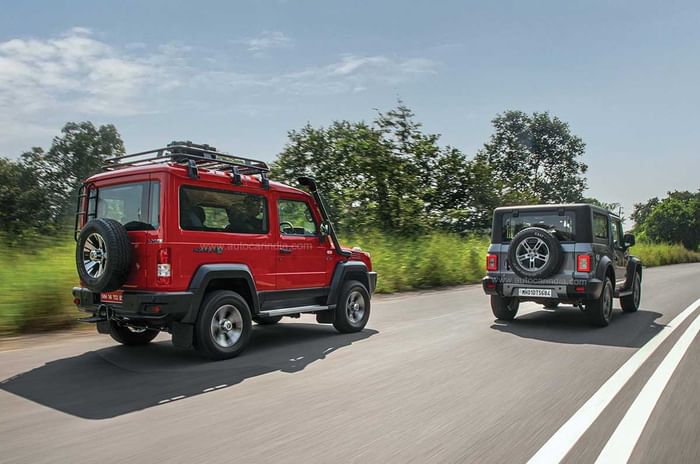
Take it easy and you’ll note the Gurkha better isolates you from road and wind noise, though the engine is noisier. The Gurkha has the comfier ride as well. Vertical movements at higher speeds are better contained, the chunky tyres absorb bad patches with aplomb and on the worst of surfaces, rear seat passengers particularly will be happier in the Force. That said, there’s sharp steering kickback on bad surfaces and you’ll also need more effort at the steering at lower city speeds. The tall Gurkha is fine on gentle turns, but expectedly doesn’t like quick direction changes. There’s also plenty of dive under hard braking and the mushy feel at the brake pedal isn’t reassuring in a panic scenario.
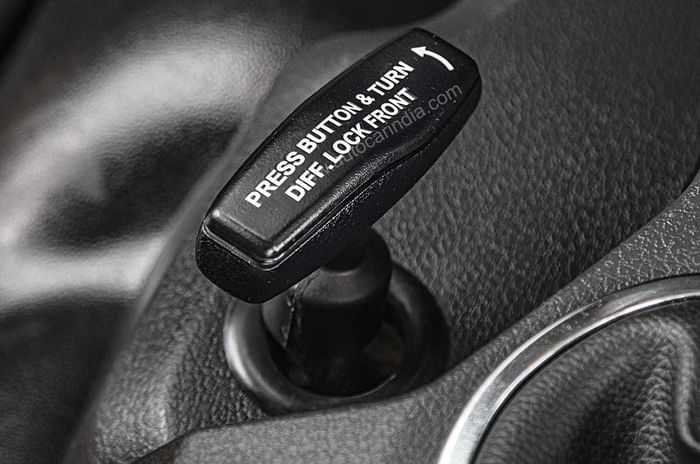
After a go in the Gurkha, the Thar almost feels like a sportscar. Its 130hp and 300Nm 2.2-litre mHawk diesel engine is much more responsive and, at average speeds, always seems to have power in reserve. The engine will also rev happily to 4,000rpm if you choose to extend it. The difference in performance is huge and it reflects in the timings. And we’re talking in-gear acceleration figures. Look at 0-100kph times, if only for academic interest, and you’ll realise that the Thar is in a whole different planet on this front. The torquey nature of the engine means you don’t need to work the gearbox often, though gearshifts are smooth and are effected with a satisfying click. Sixth gear also means the Thar is a more relaxed cruiser. 100kph in sixth works out to 2,000rpm. For reference, the Gurkha will do the same speed in fifth at 2,500rpm. The Thar’s engine runs quieter too, but at high speeds there is quite a bit of road and tyre noise in the cabin.
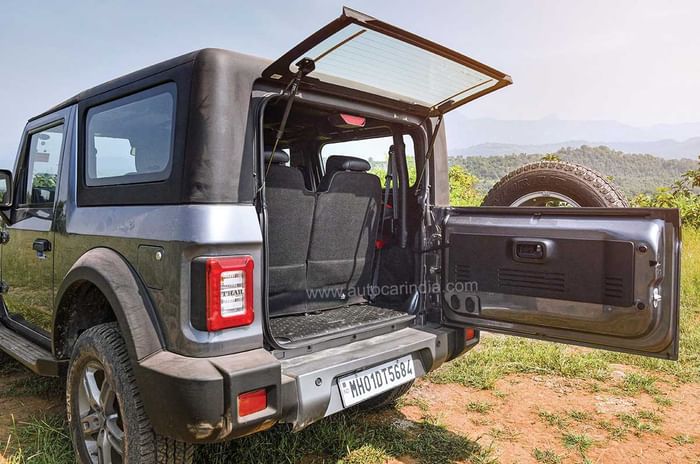
What’s not great is the Thar’s busier ride. The suspension seemingly amplifies surface imperfections and on bad patches your rear passengers will be chucked around in the cabin. To its credit, the Thar has the more precise steering (it’s easier to twirl at lower speeds too) and the stronger and more sure-footed braking. The Thar is also the only one to feature the added safety net of ESC, and it’s reassuring to know that it’s been rated 4 stars by Global NCAP on crash safety.
| Engine, gearbox and performance | ||
|---|---|---|
| Force Gurkha 2.6D 4x4 | Mahindra Thar 2.2D MT LX | |
| Engine | 4 cyls, 2596cc, turbo-diesel | 4 cyls, 2184cc, turbo-diesel |
| Power | 91hp at 3200rpm | 130hp at 3750rpm |
| Torque | 250Nm at 1400-2400rpm | 300Nm at 1600-2800rpm |
| Gearbox | 5-speed manual | 6-speed manual |
| PERFORMANCE | ||
| 20-70kph (in third) | 11.59s | 8.62s |
| 40-100kph (in fourth) | 21.74s | 13.69s |
| 0-100kph | 29.26s | 13.36s |
Which one should you buy?
So which one should it be? Well if you’re looking at either of these as a family car, the Gurkha has its appeal with its roomier cabin and easier access to the rear seats. It’s got the comfier ride too, and, true to tradition, it is properly handy in the rough. Sadly, the dull engine and cabin quality aren’t in keeping with the Rs 13.59 lakh (ex-showroom) price.
Similar money – Rs 13.68 lakh to be precise – buys you the Thar LX. The tighter rear seats and small luggage area limit its appeal, but for buyers primarily looking for a lifestyle vehicle that also works as everyday transport, the Thar is excellent. It’s got the attitude and the power to go with it, and will take you far in to the wild when required to. What’ll be a clincher for many is that the Thar is also friendly enough to be an easy upgrade from a regular car in a way the Gurkha isn’t. And that’s even before talking of the petrol and automatic options the Thar can be had with.
Long story short, it’s the superior Thar that’s the one we’d drive into the sunset.
| Verdict | ||
|---|---|---|
| Force Gurkha 2.6D 4x4 | Mahindra Thar 2.2D MT LX | |
| Price (ex-showroom, Delhi) | Rs 13.59 lakh | Rs 13.68 lakh |
| Rating | 7/10 | 9/10 [OUR CHOICE] |
| Verdict | Vastly improved Gurkha has off-road ability and roomy cabin as highlights, but still lacks ultimate finesse. | Rear seat experience is not best, but elswehere, an off-roader that’ll fit effortlessly into most buyer’s lives. |

















